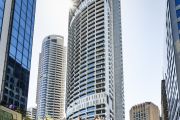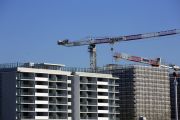
Tenants taking advantage of weak office rental conditions: JLL
High vacancy rates and strong incentives are making for strong tenants’ markets in Brisbane and Perth, according to a new report from JLL, with vacancy rates set to get worse in the short term.
Brisbane is currently experiencing one of its highest office vacancy rates in recorded history, at 16.6 per cent, which JLL predicts will worsen in coming months in the latest instalment of its tenant-focused report The Wrap.
The increase in supply as a result of developments such as 1 William Street – with a floor size of 17,000 square metres – due to be completed in 2017 is expected to compound what JLL describes as the “cyclical high” now being experienced in Australia’s third-largest capital.
JLL’s head of tenant representation – Queensland, Michael Greene, said the Queensland economy at large was also having an impact on office demand.
 Capital city vacancy rates painting a mixed picture. Photo: Supplied
Capital city vacancy rates painting a mixed picture. Photo: Supplied
“Unless and until there is recovery in the economy leading to a pick-up in demand for office space, the market will remain tenant favourable for the foreseeable future,” he said.
“If you are in the market for a long-term lease, now is a good time to secure very positive lease conditions.”
“The state of the Brisbane market presents a great opportunity for occupiers to achieve unparalleled flexibility, including short-term leases, rights to hand back space and break clauses.
“Whilst face rents have remained relatively stable, the market continues to see incentives of 40 per cent or more and landlords are having to be increasingly aggressive to attract tenants, offering to cover the tail lease for tenants moving early or delay lease commencement in addition to covering fit-out costs.”
Meanwhile in Perth, long plagued by high vacancy rates, JLL’s director of tenant representation – WA, Katherine Moss, is reporting an increase in activity in the subleasing market as tenants take advantage of flexible landlords.
“What we are witnessing is an increase in owners actively participating in tri-partite discussions in the sub-leasing market, dealing direct with the sub-tenants in order to maintain control and add value to their asset,” she said.
“As a result the new sub- tenants are benefiting from the exceptional value offered in the sublease market, whilst striking a direct relationship with the landlord, ensuring longer-term tenure and reducing risk of future real estate costs.”
Perth’s vacancy rate currently sits at 24.6 per cent, according to JLL.
Tony Wyllie, JLL’s head of integrated portfolio services – Australia, said the poor showing from Perth and Brisbane contrasted with strong performances from cities such as Sydney, on 7.1 per cent, and Melbourne, on 8 per cent, to create a mixed outlook for overall tenant sentiment.
“For the first time since the early 1990s, the Australian commercial property market is seeing the widest spread in performance across the capital city markets,” Mr Wyllie said.
“A two-tier market is well entrenched, dominated by strong demand for Sydney and Melbourne stock whilst Brisbane and Perth have almost unprecedented vacancy rates.
“This will remain a factor in the decision-making process of tenants and landlords across the country and present a number of challenges and opportunities to be considered.”










